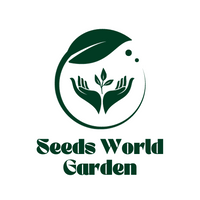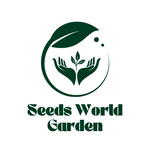Quantity: 50+ Seeds
Color: As picture
Free Shipping and Buy 2 Get 1 Free
1. Platycodon Grandiflorus Rose is a beautiful and eye-catching flower native to East Asia. It is a perennial plant that grows to about a foot tall and produces bell-shaped flowers that range in color from pale pink to dark rose. The flowers are attractive to various pollinators, such as bees and hummingbirds. The plant is also known as balloon flower due to the balloon-like buds that open up to reveal the beautiful flowers.
2. The Platycodon Grandiflorus Rose has many remarkable qualities which make it an ideal garden plant. It is very hardy and resistant to pests, diseases, and cold temperatures. It is also fairly easy to care for, requiring only occasional watering and fertilizing. The plant blooms for an extended period of time, with the flowers appearing in late summer and lasting until the first frost.
3. The Platycodon Grandiflorus Rose also produces attractive and edible seeds known as Platycodon nuts. These nuts can be eaten raw, roasted, or ground into a flour. They are rich in protein, healthy fats, and antioxidants, and are a great source of nutrition. The nuts have a mild and sweet flavor, and can be used in a variety of dishes, from salads to baked goods.
4. The Platycodon Grandiflorus Rose is also used as an ornamental plant in gardens and landscapes. The plant is known to attract hummingbirds, bees, and other pollinators with its beautiful flowers. It is also an excellent choice for a border or hedge plant, as it grows quickly and densely. The plant is also low-maintenance, and requires little pruning and trimming.
5. The Platycodon Grandiflorus Rose is a stunning and versatile addition to any garden. Its beautiful bell-shaped flowers, sweet and nutritious nuts, and easy maintenance make it an ideal choice for any landscape. Whether you’re looking for a low-maintenance ground cover or a vibrant and eye-catching flower, the Platycodon Grandiflorus Rose is a great option.
How to Grow Your :
1. Soak in water for 24 to 48 hours before you t them. This allows moisture to penetrate the coat and leads to swelling of the ’s parts to spur germination.
2. Find a location with well-drained, organic-rich, sandy or silt loam and with a minimum average temperature of about 60 degrees Fahrenheit during the t’s early growth. The most favorable temperature range is between 75 to 80 degrees. The t should ideally receive six hours of sun per.
3. Till the soil to rid it of weeds and to increase air circulation. Apply compost to the soil after tilling.
4. Place two or three in a hole about ½ to 1 inch deep in the soil along a fence or under a 6-foot-tall trellis form. The holes should be 15 to 23 inches apart and rows 3 to 5 feet apart.You can also start in small plastic pots in a commercial soil mix.
Shipping:
All orders Free Shipping and Buy 2 Get 1 Free. Normally North American delivery time will take 7-14 days (shipping delays due to large orders will add 1-3 weeks depending on time). Other areas please wait 14-28 days for the order to arrive.
RETURN POLICY
We have a 30-day return policy, which means you have 30 days after receiving your item to request a return.


